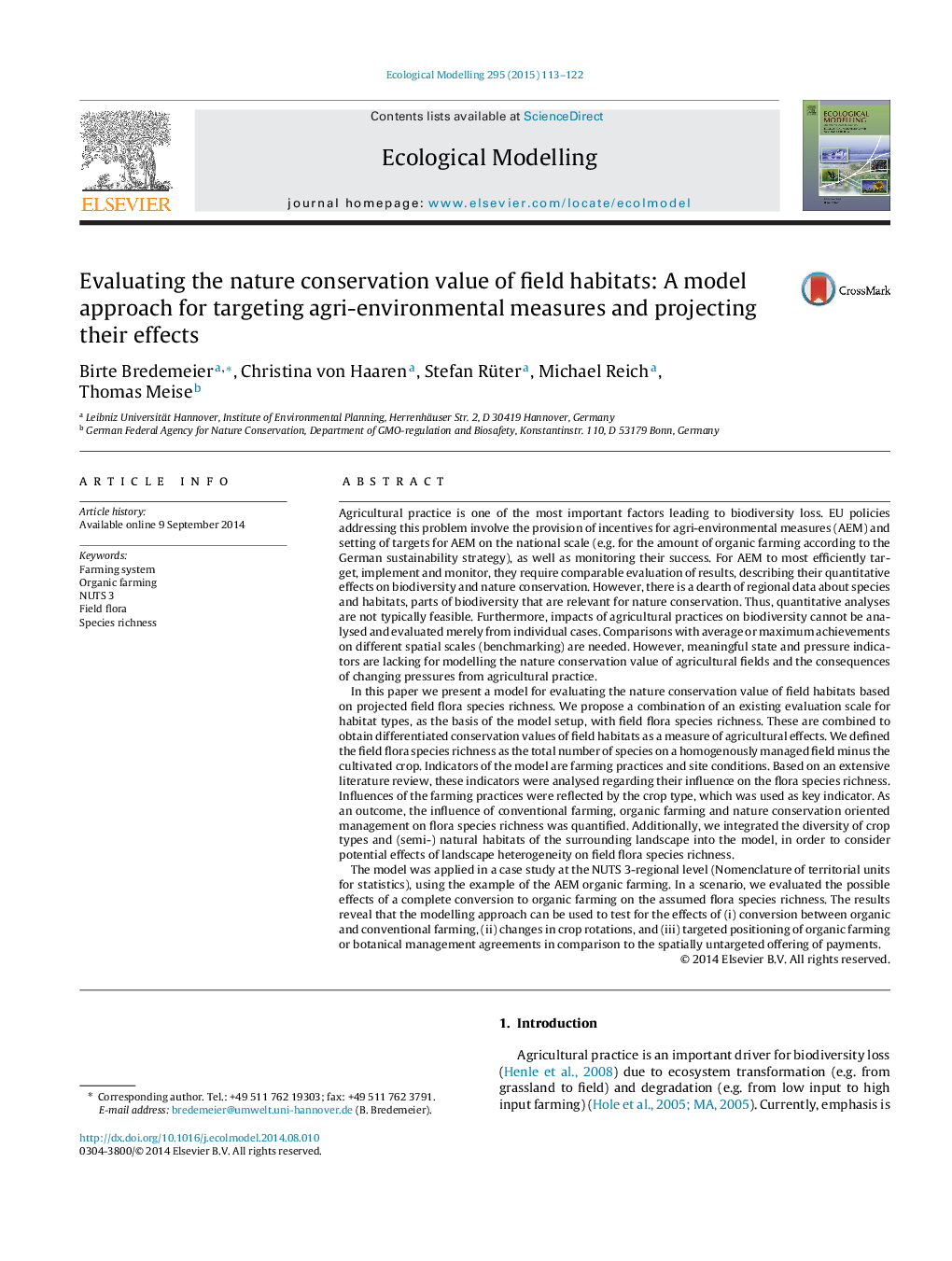| Article ID | Journal | Published Year | Pages | File Type |
|---|---|---|---|---|
| 4375869 | Ecological Modelling | 2015 | 10 Pages |
•Biodiversity is operationalised in support of agri-environmental strategy building.•Field flora species richness is used to measure effects of biodiversity determinants.•Effects of farming practices and landscape conditions are considered in the model.•The modelling approach uses regionally available soil and land use data.•The model generates conservation values of field habitats on a cardinal scale.
Agricultural practice is one of the most important factors leading to biodiversity loss. EU policies addressing this problem involve the provision of incentives for agri-environmental measures (AEM) and setting of targets for AEM on the national scale (e.g. for the amount of organic farming according to the German sustainability strategy), as well as monitoring their success. For AEM to most efficiently target, implement and monitor, they require comparable evaluation of results, describing their quantitative effects on biodiversity and nature conservation. However, there is a dearth of regional data about species and habitats, parts of biodiversity that are relevant for nature conservation. Thus, quantitative analyses are not typically feasible. Furthermore, impacts of agricultural practices on biodiversity cannot be analysed and evaluated merely from individual cases. Comparisons with average or maximum achievements on different spatial scales (benchmarking) are needed. However, meaningful state and pressure indicators are lacking for modelling the nature conservation value of agricultural fields and the consequences of changing pressures from agricultural practice.In this paper we present a model for evaluating the nature conservation value of field habitats based on projected field flora species richness. We propose a combination of an existing evaluation scale for habitat types, as the basis of the model setup, with field flora species richness. These are combined to obtain differentiated conservation values of field habitats as a measure of agricultural effects. We defined the field flora species richness as the total number of species on a homogenously managed field minus the cultivated crop. Indicators of the model are farming practices and site conditions. Based on an extensive literature review, these indicators were analysed regarding their influence on the flora species richness. Influences of the farming practices were reflected by the crop type, which was used as key indicator. As an outcome, the influence of conventional farming, organic farming and nature conservation oriented management on flora species richness was quantified. Additionally, we integrated the diversity of crop types and (semi-) natural habitats of the surrounding landscape into the model, in order to consider potential effects of landscape heterogeneity on field flora species richness.The model was applied in a case study at the NUTS 3-regional level (Nomenclature of territorial units for statistics), using the example of the AEM organic farming. In a scenario, we evaluated the possible effects of a complete conversion to organic farming on the assumed flora species richness. The results reveal that the modelling approach can be used to test for the effects of (i) conversion between organic and conventional farming, (ii) changes in crop rotations, and (iii) targeted positioning of organic farming or botanical management agreements in comparison to the spatially untargeted offering of payments.
